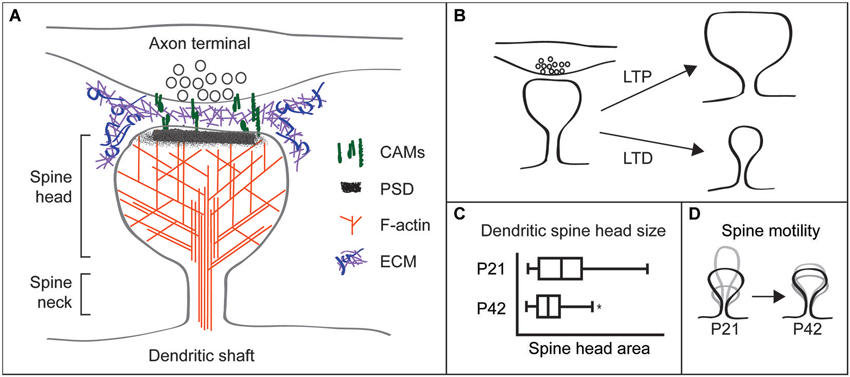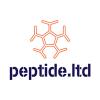This post is extremely speculative on my part and requires a significant amount of additional fact checking (aka I'm making A LOT of assumptions that could very well be wrong)...but I'm short on time and thought I would share anyway. =)
"We demonstrate that memory length is regulated cooperatively through the activation of adducin (add-1) and by the inhibitory effect of msi-1 (musashi)." http://www.ncbi.nlm....pubmed/24630719
So, activating adducin and inhibiting musashi might have a synergistic effect on retaining (not acquiring) memories. Adducin is activated by rho-kinase and rho-kinase is activated by arachidonic acid. Therefore, take arachidonic acid (not too much) to enhance adducin. Additionally, DHA synergizes extremely well with arachidonic acid and has been shown to enhance memory in humans.
Egg yolks, chicken, and organ meats are good sources of arachidonic acid. It is also sold online as a supplement.
To sum up:
1. Oleic Acid (olive oil) inhibits musashi
2. Arachidonic Acid enhances adducin
3. DHA combines well with Arachidonic Acid
4. Boswellia prevents the breakdown of Arachidonic Acid into its inflammatory metabolites.
**Note: some studies have indicated that arachidonic acid causes significant inflammation but there is disagreement on this. Check out the research and decide if it's something you're interested in testing out. =) Most of us probably get a decent amount from our diet as well so supplementation may be unnecessary.
http://www.ncbi.nlm....pubmed/22307086
EMBO J. 2012 Mar 21;31(6):1453-66. doi: 10.1038/emboj.2012.14. Epub 2012 Feb 3.
A role for α-adducin (ADD-1) in nematode and human memory.
Abstract
Identifying molecular mechanisms that underlie learning and memory is one of the major challenges in neuroscience. Taken the advantages of the nematode Caenorhabditis elegans, we investigated α-adducin (add-1) in aversive olfactory associative learning and memory. Loss of add-1 function selectively impaired short- and long-term memory without causing acquisition, sensory, or motor deficits. We showed that α-adducin is required for consolidation of synaptic plasticity, for sustained synaptic increase of AMPA-type glutamate receptor (GLR-1) content and altered GLR-1 turnover dynamics. ADD-1, in a splice-form- and tissue-specific manner, controlled the storage of memories presumably through actin-capping activity. In support of the C. elegans results, genetic variability of the human ADD1 gene was significantly associated with episodic memory performance in healthy young subjects. Finally, human ADD1 expression in nematodes restored loss of C. elegans add-1 gene function. Taken together, our findings support a role for α-adducin in memory from nematodes to humans. Studying the molecular and genetic underpinnings of memory across distinct species may be helpful in the development of novel strategies to treat memory-related diseases.
http://www.ncbi.nlm....pubmed/10209029
J Cell Biol. 1999 Apr 19;145(2):347-61.
Phosphorylation of adducin by Rho-kinase plays a crucial role in cell motility.
Abstract
Adducin is a membrane skeletal protein that binds to actin filaments (F-actin) and thereby promotes the association of spectrin with F-actin to form a spectrin-actin meshwork beneath plasma membranes such as ruffling membranes. Rho-associated kinase (Rho- kinase), which is activated by the small guanosine triphosphatase Rho, phosphorylates alpha-adducin and thereby enhances the F-actin-binding activity of alpha-adducin in vitro. Here we identified the sites of phosphorylation of alpha-adducin by Rho-kinase as Thr445 and Thr480. We prepared antibody that specifically recognized alpha-adducin phosphorylated at Thr445, and found by use of this antibody that Rho-kinase phosphorylated alpha-adducin at Thr445 in COS7 cells in a Rho-dependent manner. Phosphorylated alpha-adducin accumulated in the membrane ruffling area of Madin-Darby canine kidney (MDCK) epithelial cells and the leading edge of scattering cells during the action of tetradecanoylphorbol-13-acetate (TPA) or hepatocyte growth factor (HGF). The microinjection of Botulinum C3 ADP-ribosyl-transferase, dominant negative Rho-kinase, or alpha-adducinT445A,T480A (substitution of Thr445 and Thr480 by Ala) inhibited the TPA-induced membrane ruffling in MDCK cells and wound-induced migration in NRK49F cells. alpha-AdducinT445D,T480D (substitution of Thr445 and Thr480 by Asp), but not alpha-adducinT445A,T480A, counteracted the inhibitory effect of the dominant negative Rho-kinase on the TPA-induced membrane ruffling in MDCK cells. Taken together, these results indicate that Rho-kinase phosphorylates alpha-adducin downstream of Rho in vivo, and that the phosphorylation of adducin by Rho-kinase plays a crucial role in the regulation of membrane ruffling and cell motility.
http://www.ncbi.nlm....pubmed/11294240
Pflugers Arch. 2001 Feb;441(5):596-603.
Arachidonic acid-induced Ca2+ sensitization of smooth muscle contraction through activation of Rho-kinase.
Abstract
Arachidonic acid activates isolated Rho-kinase and contracts permeabilized smooth muscle fibres. Various assays were carried out to examine the mechanism of this activation. Native Rho-kinase was activated 5-6 times by arachidonic acid but an N-terminal, constitutively-active fragment of Rho-kinase, expressed as a glutathione-S-transferase (GST) fusion protein and including the catalytic subunit (GST-Rho-kinase-CAT), was not. GST-Rho-kinase-CAT was inhibited by a C-terminal fragment of Rho-kinase and arachidonic acid removed this inhibition. These results suggest that the C-terminal part of Rho-kinase, containing the RhoA binding site and the pleckstrin homology domain, acts as an autoinhibitor. It is suggested further that activation by arachidonic acid is due to its binding to the autoinhibitory region and subsequent release from the catalytic site. Arachidonic acid, at concentrations greater than 30 microM, increases force in alpha-toxin-permeabilized femoral artery but not in Triton X-100-skinned fibres. The content of Rho-kinase in the latter was lower than in alpha-toxin-treated or intact fibres. The arachidonic acid-induced contraction was not observed at a pCa above 8.0 and was inhibited by Y-27632 and wortmannin, inhibitors of Rho-kinase and myosin light-chain kinase (MLCK), respectively. The activation of Rho-kinase and subsequent phosphorylation of the myosin phosphatase target subunit inhibits myosin phosphatase and increases myosin phosphorylation.
http://www.ncbi.nlm....pubmed/16905216
Neurosci Res. 2006 Oct;56(2):159-64. Epub 2006 Aug 14.
Dietary supplementation of arachidonic and docosahexaenoic acids improves cognitive dysfunction.
Abstract
Age-dependent increase of peroxidation of membrane fatty acids such as arachidonic acid (ARA) and docosahexaenoic acid (DHA) in neurons was reported to cause a decline of the hippocampal long-term potentiation (LTP) and cognitive dysfunction in rodents. Although supplementation of ARA and DHA can improve LTP and cognitive function in rodents, their effects in humans are unknown. The present work was undertaken to study whether ARA and DHA have beneficial effects in human amnesic patients. The subjects were 21 mild cognitive dysfunction (12 MCI-A with supplementation and 9 MIC-P with placebo), 10 organic brain lesions (organic), and 8 Alzheimer's disease (AD). The cognitive functions were evaluated using Japanese version of repeatable battery for assessment of neuropsychological status (RBANS) at two time points: before and 90 days after the supplementation of 240 mg/day ARA and DHA, or 240 mg/day of olive oil, respectively. MCI-A group showed a significant improvement of the immediate memory and attention score. In addition, organic group showed a significant improvement of immediate and delayed memories. However, there were no significant improvements of each score in AD and MCI-P groups. It is suggested from these data that ARA and DHA supplementation can improve the cognitive dysfunction due to organic brain damages or aging.
Edited by lostfalco, 15 April 2015 - 02:52 PM.
![]() ... and the apparently therapeutic effect still remains.
... and the apparently therapeutic effect still remains.



























































